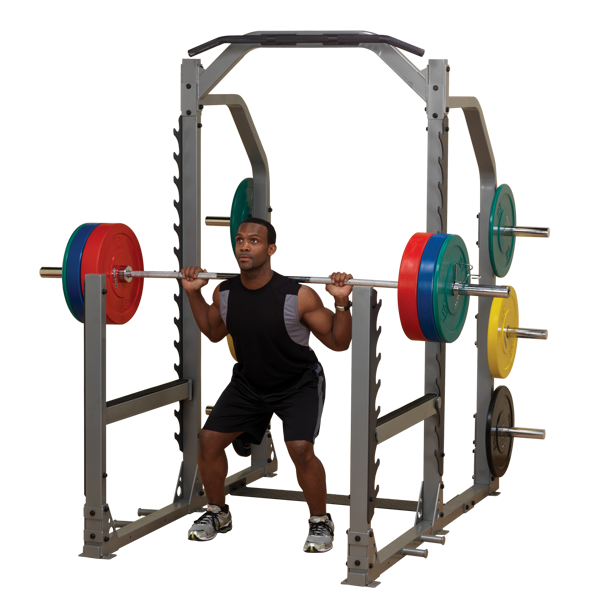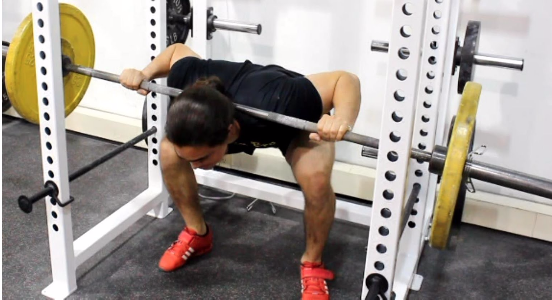This is a guest post from Gregory Brown, chief editor at ConstructMuscles.com. Stay connected to Gregory on Twitter or by visiting ConstructMuscles.com.
Introduction
The squat is one of the most effective strength and weight training movements, but it has caused more knee pain and injury than every other weight training exercise.
Some fitness enthusiasts avoid squat exercises all together for fear of getting knee injury. Squat exercises are highly beneficial, although most people fail to realize that they are not an express ticket to knee injury and damages.
Do you want to learn how to squat without destroying your knees? If yes, then this article is for you. In this article we’ll detail correct squatting techniques and the mistakes to avoid for you to make most of your squatting movements.
Benefit of squat exercise
Squatting is a full body exercise and also an important aspect of strength and fitness training that focuses mostly on training the lower body. Squatting comes with a lot of benefits some of which are discussed below.
- It builds the entire muscle of the body: If you need a powerful way to build muscle and enhance your fitness level, you should stop taking squat exercise with levity. Squat will not only build muscle in your lower body (legs, hip, buttock, calves, hamstrings, and quadriceps) but also provide an anaerobic environment that enhances total body muscle building.
- It increases the release of hormones: Testosterone and growth hormones release are increased with squatting. These hormones play a vital role in growth and muscle developments.
- It strengthens the core: squatting as a weight training exercise is one of the best exercises to enhance your core strength.
- It improves flexibility: Squatting helps to improve your balance and range of motion which will enhance your sporting activities and also help to reduce pain.
- It helps to avoid injury: The effects of squatting on the knee are contrary to the belief that it causes knee damages if the exercises are performed correctly. It strengthens the knees and hips and builds healthy bones and joints thereby lowering the risk of injury when running, jumping or performing another form of physical exercises.
- It burns fat and also improves the removal of waste from the body.
- It improves blood circulation as well as your body posture.

Body-Solid SMR1000 ProClubLine Multi Squat Rack
How to squat properly
Many people criticize squats because of its ability to destroy the knees. But studies show that the reason most people hurt their knees while squatting is because of using a bad squatting technique or not using the right training aids. Squatting can strengthen your knee connective tissues and improve your knee stability only when it is performed correctly.
It is important to learn how to squat properly since you do not want to cripple your knees in the middle of the whole exercise. The proper way to squat without destroying your knees and the mistakes to avoid are discussed below.
- Use the right training aids: Take your knee protection seriously! Using a power rack is an excellent way to perform weight training movements without hurting your knees. It provides safety features with its safety bars that can help you to hold the weights that you find difficult to lift or set down while performing your squat exercises. Wearing the right knee sleeves can also be an effective way of preventing knee injury. Sleeves help to improve blood circulation to the legs, keep your knees warm, hold your knee in place if you once had a knee injury and also help you in lifting more weights.

Photo Credit: From https://www.youtube.com/watch?v=423Ew_DQC40
- Adjust your posture: Your body posture and position is critical to the success of your squat exercises. Warm up your body and then stand with your feet wider apart (a bit wider than your shoulder). Avoid the mistake of making your stance too wide or too narrow. Make sure your knees are straight, and your toes are facing forward (pointing outward at angle 45 – 50 degrees) or turn your feet out at an angle of 15 – 30 degrees so that they are not parallel to each other. This will align your pelvis and femur bone for a powerful contraction as you perform the squat.
- Bring your body slowly into a squat position by moving your hips backward before you bend your knees and open your legs. Make sure your upright spinal position is not distorted and that your head is looking directly to your front. With this, the center of gravity is placed on your lower body for an effective push. Do not move your feet and body but your legs and knees. As you descend your body into a squat position, put your body weight on the middle of your feet, this will help you avoid leaning too forward. Do not place too much weight on your toes as it could make you lift your hips too quickly. Avoid caving your knees inward; turn them out instead so that they track over your toes.

Photo Credit: From https://forum.bodybuilding.com/showthread.php?t=150924933
- The right squat depth: Most people believe that squatting below parallel is neither good nor safe for the knee. But this is a misconception and a common mistake most people make. Deep squat is a perfectly natural position which strengthens the knee. You are not using all your leg muscle when you perform shallow squats, and this can result in imbalance and injury. Squat deeply just like a toddler and go down until your legs touch your calves. Try doing this gently or find something to support yourself if you feel you lack enough strength to do so on your own. In a nutshell, a full squat is not injurious to your knee health; it is actually one of the best ways to protect your knees.
- As you ascend from your squat position, be sure to follow the same line as your downward movement. Avoid bending your spine; your back should remain straight, and your core kept tight. Extend your knees and your hips simultaneously as you perform the upward movement. Do not push up too fast, keep your feet on the ground and avoid standing up on your toes.
- Watch your tempo: Weakness or fatigue in your knee muscle is the cause of knee injury. When you increase the intensity of your squat than required, you are more likely to destroy your knees. Squat exercise should be done by descending little by little and ascending quickly. Descending slowly will help you maintain the right form. Do not rush yourself or assume the position of a pro too early. Your tempo and intensity should be improved gradually as your fitness level improves.
- Use the right training aids: Take your knee protection seriously! Wearing the right knee sleeves can be an effective way of preventing knee injury. Sleeves help to improve blood circulation to the legs, keep your knees warm, hold your knee in place if you once had a knee injury and also help you in lifting more weights.
Watch the video below to learn more:
Conclusion
Contrary to the conventional belief, squats are beneficial to your knees, and this is why you shouldn’t give it up for fear of getting your knees injured.
Everyone wants to gain without feeling the pain, but is this possible with squats? Of course, yes!
Following the guidelines given above sure guarantees you pain-free squats. But remember to treat your joint and back pain properly and seek your doctor’s recommendation before starting a new fitness routine.
Author Bio
Gregory is a chief editor at ConstructMuscles.com. He spends half of my time on his blog while the other half on being a physical fitness trainer. Believing in the great benefits of bodybuilding and fitness to the body, he has been motivated to become a fitness enthusiast. Stay connected to him on Twitter.
